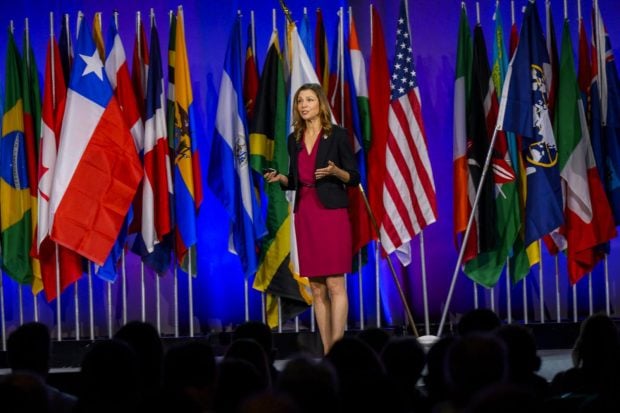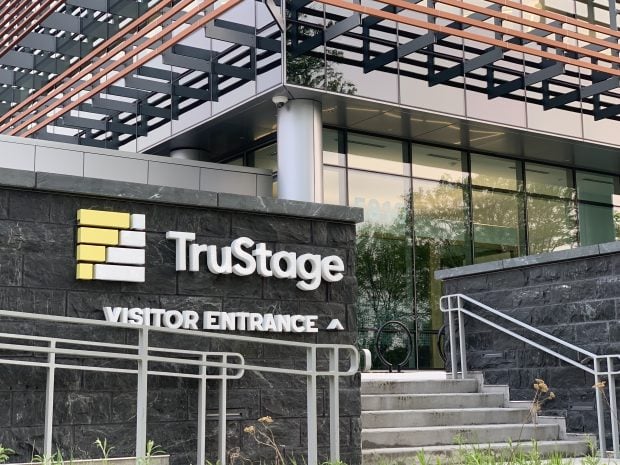LANSING, Mich. – Underscoring a trend among automotive credit unions to diversify, it hardly seemed surprising that three of the largest auto CUs in the U.S. carried Web announcements about converting to community charters. “We actually converted eight months ago but we made it official last week by changing our name and letting our members know,” declared Werner Beck, president/CEO of the $142 million United Bay Community CU, formerly United Bay City CU. Meanwhile, the $420 million Lansing Automakers Federal Credit Union, while skipping the “community” name said it has already seen a healthy spurt in memberships since making the conversion May 15 after experiencing “stagnant” totals for months. LAFCU also carried an announcement on its Web page of “a major milestone” for the CU as it now invites new members to join while taking advantage of “the tremendous opportunities” offered by a community charter. The $280 million Dort FCU in Flint, which switched to a community charter last December, still carries a Web mention that it “recently converted from a multi-occupational common bond charter to a community based charter” providing member eligibility in four Michigan counties. The actions by United Bay, LAFCU and Dort underscore the continued shift by automotive CUs to seek new expansion avenues in the face of employee layoffs and plant closings by the Big Three automakers, particularly in hard-hit Michigan. “We've seen the GM Power Train plants here shrink from 4,200 to 1,700 employees,” lamented Beck in reviewing his 26,000 member CU's “need” to take action to counter those numbers and expand into four neighboring counties. Likewise, LAFCU said it is satisfied it made the right decision to switch to a community charter “after five years of asset growth” but none in membership, commented Richard Gifford, president and CEO. “We're already seeing success in the last few months considering that in April we opened 17 new accounts, but in May after only half a month after making the announcement on the 15th we had opened 119 net new accounts,” said Gifford. The account openings even improved over the summer with 342 in June, 311 in July and August-Septembers in the same range, said Gifford. To draw new members in three counties – Ingham, Eaton and Clinton County – LAFCU did extra marketing and promotion and revamped an indirect auto dealer program giving extra reserve incentives to dealers and speeding up the approval process “so a member can get an answer in five minutes.” “We felt the LAFCU name was well known in the market and saw no need to add community,” explained Gifford. Gifford was one of 400 automotive CEOs and directors who traded ideas on community charter formations, lending, new product introductions, employee turnover and other topics during three days of “roundtable” discussions and workshops at the recently held 22nd annual Combined Council of Automotive Credit Unions in Scottsdale, Ariz. The CU auto execs, in many of the sessions, were joined by100 firefighter CU CEOs who simultaneously conducted their 2nd annual Firefighter CU Conference in a “piggyback” operation arranged by meeting planners. Beck of United Community in Bay City said the CCACU sessions were particularly productive in serving as a valuable education vehicle for directors to make them directly aware of problems faced by CUs. James Carson, president and CEO of the $56 million ABD FCU in Warren, a Detroit suburb, said the employee cutbacks and recent wage reductions at automaker plants continue to play havoc with chargeoffs and bankruptcies. “Michigan leads the nation in bankruptcies right now,” said Carson noting that 75% of all charge offs are bankruptcy related. Carson is the current president of the Daimler Chrysler Council of CUs, a unit of the CCACU. In spite of these “challenging” conditions, said Carson, ABD and other Michigan CUs “remain healthy” with his Warren CU holding 12% reserves. Of the 31 CUs in the Chrysler Council, five have already gone to community charter, “some are looking” with more conversions due to be culminated in the next three to four years. He said the problems at Chrysler “are not quite as bad” as the federal bailout of the company back in the early `80s but the company “is in difficult straits.” Like other auto CU leaders, Carson acknowledged a point raised by Pete Crear, CUNA executive vice president and a “roundtable” moderator/ speaker at the CCACU meeting, that mergers of very small auto CUs may be in the offing. In some communities, there remains overlap and competition among the small CUs seeking the same member base, Crear said. Sue Madden, president and CEO of the $56 million Vantage FCU in Brook Park, a Cleveland suburb, acknowledged that the merger of small CUs does indeed remain a path for CU expansion as well as additional SEGs. “NCUA now has fast approval on SEG applications and we can now get approval in seven to 10 days,” said Madden, whose CU currently has 48 SEGs and expects to add five or six more in a year. Vantage has also witnessed over the years a sharp downsizing at GM's sprawling Chevrolet plant in Parma, dropping from 10,000 to 3,000 over 10 years and Ford plants in Brook Park have sharply reduced overtime, she said. Shirley Meyer, president of Woodlawn Auto Workers CU in Blasdell, N.Y. said her $79 million CU “is not even thinking of a community charter,” but rather has found going after the underserved highly productive in bringing a 10% increase in membership over the last year to 17,000. “We've also been pushing family members and that has worked well, too,” said Meyer, who is also president of the Ford Council of CUS. Woodlawn, located in a Buffalo suburb, “has a nice capital ratio” and believes it can “accomplish more by following the credit union philosophy of reaching out to the underserved in our area rather than competing directly against the banks” with a community charter. In a concluding comment, Leroy Nesbit Jr., president of the Council of General Motors Credit Unions and a director of Dort in Flint, said the overall Arizona meeting “was one of the most important we've held in years” considering the changes impacting the industry. “And the roundtables were very helpful for all of us in exchanging our ideas” on how auto CUs are coping with conditions, said Nesbitt. – [email protected]
© 2025 ALM Global, LLC, All Rights Reserved. Request academic re-use from www.copyright.com. All other uses, submit a request to [email protected]. For more information visit Asset & Logo Licensing.







